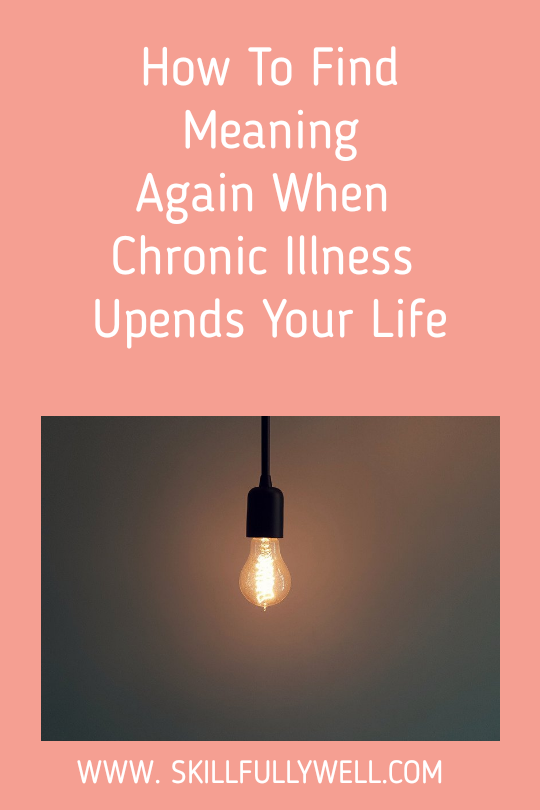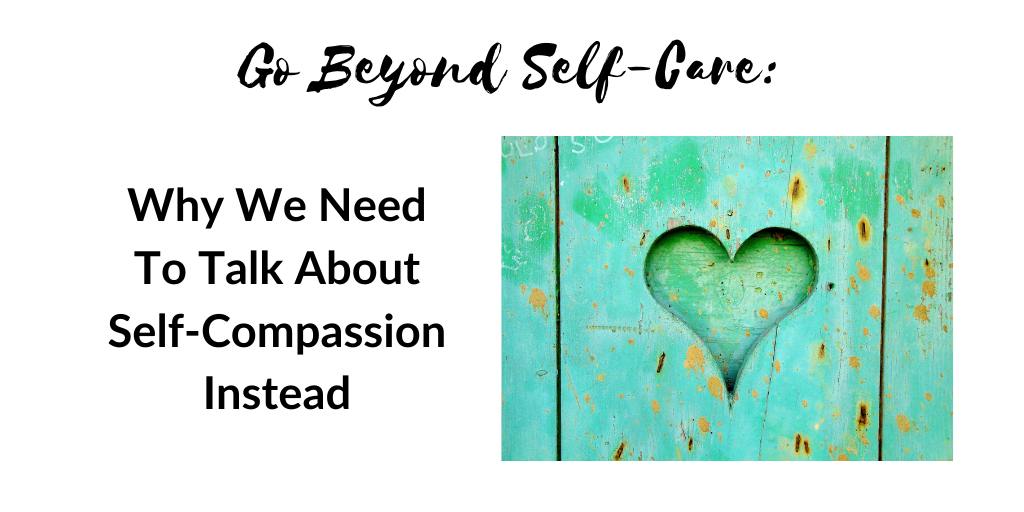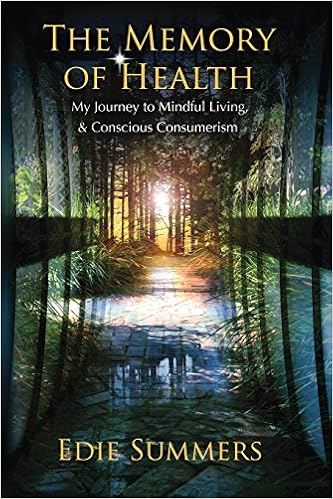
You’re sitting in the doctor’s office, being told you have an incurable illness. Maybe you have to leave your career, or pull back on your workload, with set accommodations. You can’t live up to being the involved wife, parent, sister or daughter you planned on being. Travel become difficult, athletic ability falls off, and favorite hobbies or pastimes become more challenging. But mostly you just don’t feel like you. A period of grief ensues over your previous life, and it crashes over you in waves.
Eventually you start asking the big questions. Can you live a good life despite pain? How do you find meaning again amidst all the change?
I don’t have THE answer, but I did find some answers. Why is something sustaining, nourishing, enjoyable? That’s what I had to ask myself in order to find meaning again. I came back to the saying, “A life well lived is a life fully experienced.”
I was very career focused B.F., finding satisfaction in the field of global health (HIV/AIDS prevention and treatment). Once all that stopped, I felt stuck and lost. The one thing I had been certain of, my “calling”, was gone. Making a difference through my career had given me a sense of purpose.
Before fibro, travelling was one of my favorite activities. Experiencing different cultures and ways of life was important to me because it had made my own worldview expand. Broadening my horizons made me feel vital and alive.
How to replicate that feeling from my couch at home? Can you broaden your horizons from home? Yes! By learning something new. On the traveling theme, free virtual live tours from local guides in English in Heygo are a lovely way to spend an hour. Time that feels spent on rewarding things makes it meaningful.
Learning via podcasts and audiobooks during my enforced rests turn a limitation into an adventure. I’ve found I enjoy learning about history, as a way to travel from my armchair. (I’m a 🤓). Learning feels like time well spent, whether it’s listening to a historical mystery or an episode of a podcast on ancient Egypt. After all, curiosity keeps your brain healthy and young. What do you geek out about? It can be anything, from an academic subject, to a hobby, to DIY project techniques. Intentionally find ways to learn about things you find interesting, from online classes, podcasts, audiobooks, or just connecting with interesting people online and asking them questions.
Over time I came to see that there is a lot of life to live here, in ordinary life, without globetrotting or being career driven, which is what I believed at 20. But in learning to be mindful and still, I’ve found how much I missed before in my search for New Experiences, and how much being present enriches my life. Being on autopilot, or always looking ahead, meant I whizzed past sunsets, birdsong, long hugs, savoured meals, belly laughs and so many other moments. Connecting to the beauty and wonder all around us via our senses is possible, even while in pain, even at home. Finding ways to feel that makes life more worthwhile. Mindfulness as a practice, or just realizing the need to be present, means showing up for moments big, and small. Choose to stay with an experience instead of reaching for a distraction.
And the difficult experiences of chronic pain, surviving the limitations, still mean that you are living fully. I’ve grown in strength, resilience, compassion, self confidence and patience in ways I never would have before my illness. After all, what else really is the point of life other than to become a better, wiser version of ourselves on this journey? This is another way to have a purpose in life. I’ve come to value growing as a person as one of my most important accomplishments, instead of getting promotions, keeping up with the Joneses, or any of the other markers we are taught to measure our success by. Without fibro, I would have let external factors determine my self worth. It’s not that I’m grateful for fibromyalgia, or that I’m glad I have it, but I have found a way to make meaning out of it, and find a silver lining. I’m developing as I go; it’s a work in progress, but a worthwhile one.
I’ve written before about the critical importance to our happiness of self expression and contributing to something greater than ourselves. We are often taught that the only way to do this is to work and be a “productive citizen.” However, there are so many other ways to find connection, such as sharing your story and finding online relationships, to learn from and support others. Writing on my blog and now writing as a freelancer, has transformed my life. Supporting others online, teaching, mentoring, and sharing your experience are all ways to contribute, big and small.
Fiction writing has engaged me again in a new way through imagination. (I’m writing a historical mystery set in Niagara Falls during the American civil war, when the area was a hotbed of spies and intrigue). Creativity can be a form of salvation, as a craft, an art, music, interior decoration, in the kitchen, the garden, on the page, or anywhere else. We shift into an active mode, not passive mode when creating. Yet we also refrain from intellectualizing, analyzing, number crunching or any other left brain thinking. Creativity is about engaging intuitively, emotionally, and symbolically with the world, through self expression, using the right brain. It’s good for your heart; it’s good for your soul. Don’t disparage it as “unproductive” or unimportant, because it is a meaningful source of intrinsic pleasure. It’s meaningful because it’s a way of being open and engaging with the world around you (sensing a theme yet?), via your senses and interpretations, from your own unique perspective.
We find meaning in our relationships, in our faith and in our philosophies. But we have to be present, open and engaged to really benefit from these resources. That doesn’t happen overnight! But tuning in to our senses, our inner strengths, our creativity, our intrinsic interests and sources of pleasure allows us to connect to the world in ways that create and cultivate meaning in our lives. This is a form of strengths based healing – leveraging your inner resources to create a life fully experienced, and well lived – in spite of adversity.





















